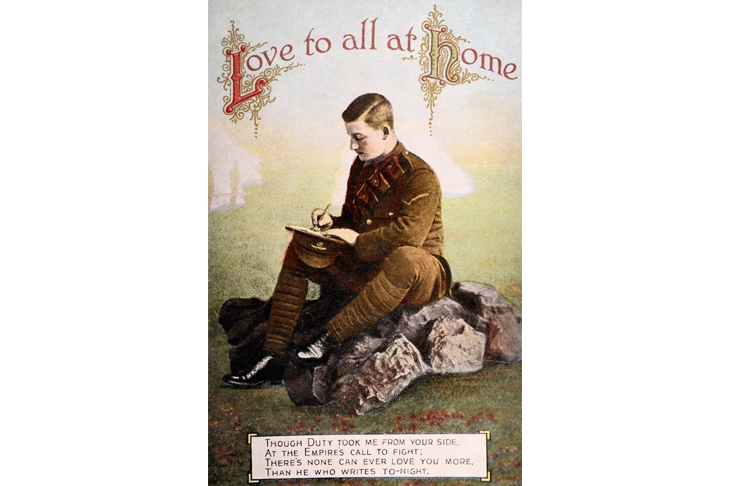At the close of the 1970s, I found a selection of postcards in an antique shop which had been sent from the Western Front in 1917 by a soldier named Private Howe to his young daughter Ena. I was struck by the immediacy of the language, and the careful avoidance of anything hinting at danger, combined with the tastefully chosen French photomontages of flowers and romanticised battlefields.
In Words and the First World War, Julian Walker has examined many such postcards, alongside letters sent to and from the Fro nt, private diaries, trench publications such as the Wipers Times, national and regional newspapers and other sources. An illustrated analytical study, it considers the situation at home, at war, and under categories such as race, gender and class to give a many-sided picture of language used during the conflict.
This is familiar territory for the author, who co-wrote the book Trench Talk: Words of the First World War, and revisits theoccasional entertaining example from the latter, like the mocking Allied response to the German motto, ‘Gott Mit Uns’ (God be with us), which took the form of a home-made sign reading: ‘Don’t swank! We’ve got mittens too!’
Walker deftly highlights the many communication problems arising during the conflict, for instance in the French army, where there were ‘soldiers from mainland France whose first language was Breton, Flemish, Gallo or Occitan; in the case of Breton-speaking soldiers, for many Breton was their only language’. Some in the war zones attempted to master at least a few foreign words. Local civilians picked up English in order to sell things to troops (including boys offering the favours of their elder sisters); and Aubrey Herbert (the grand-father of Auberon Waugh) recorded meeting a Serbian at Gallipoli ‘who had been learning Italian specifically to aid his ambition of stabbing a Cretan’.








Comments
Join the debate for just £1 a month
Be part of the conversation with other Spectator readers by getting your first three months for £3.
UNLOCK ACCESS Just £1 a monthAlready a subscriber? Log in